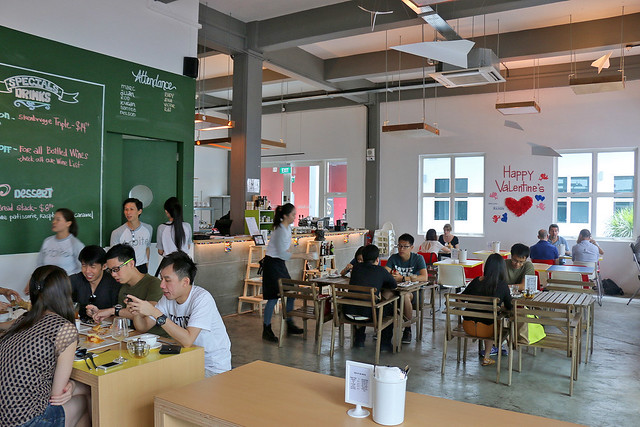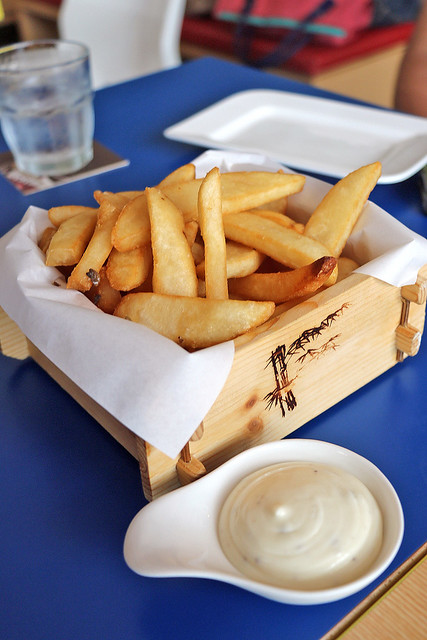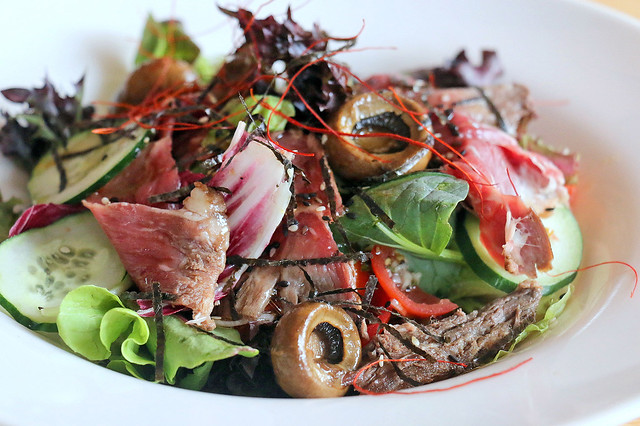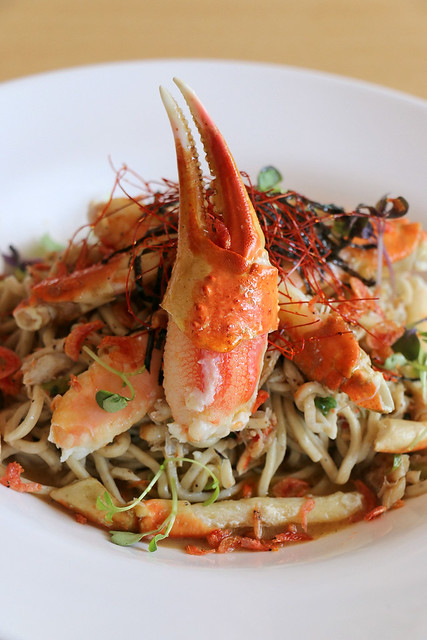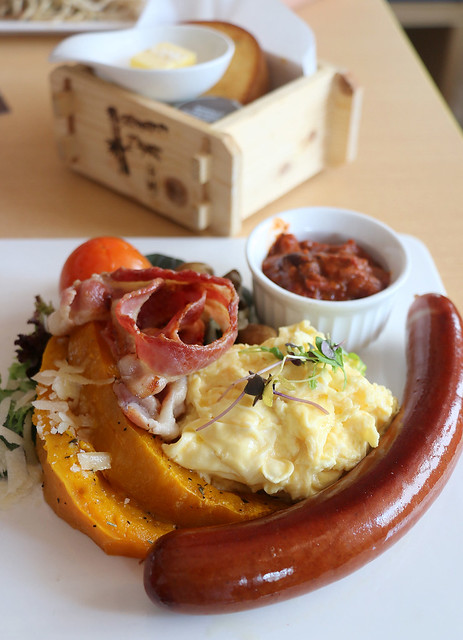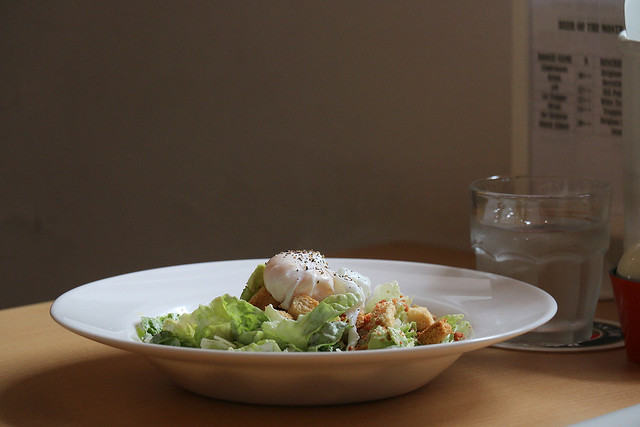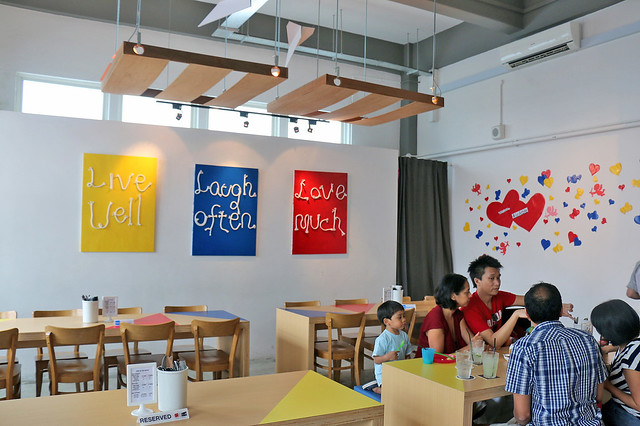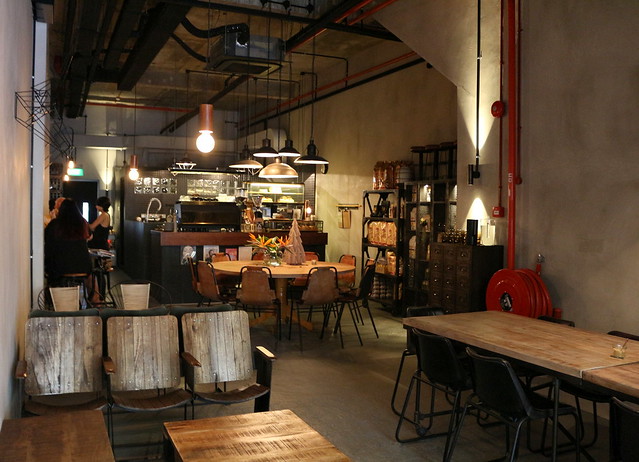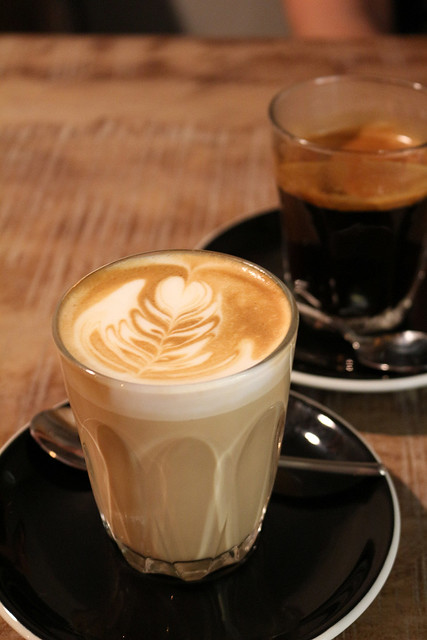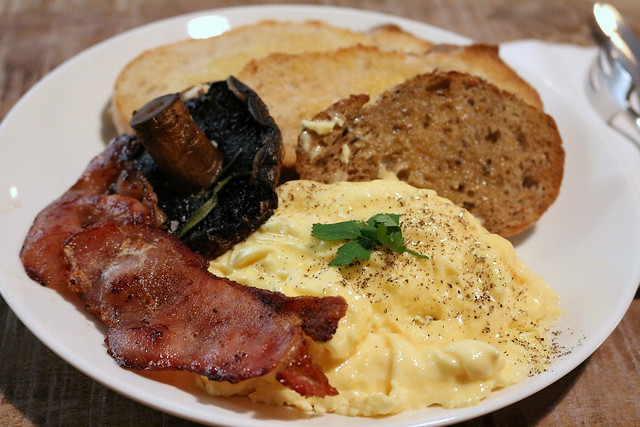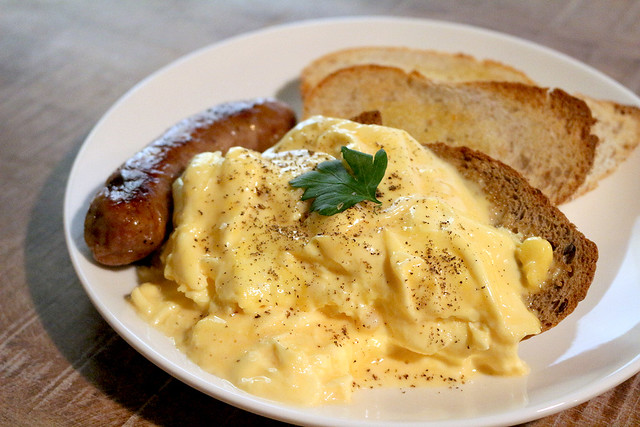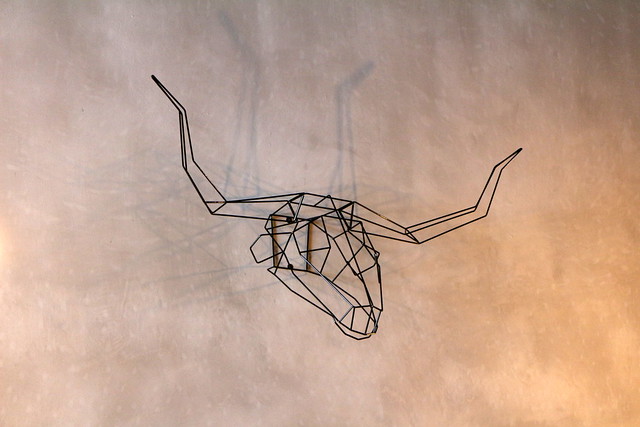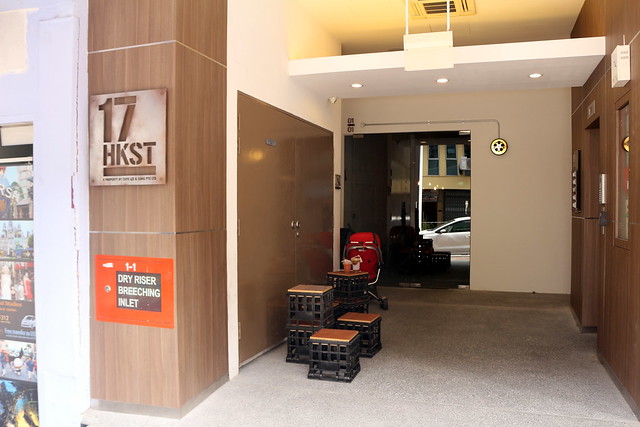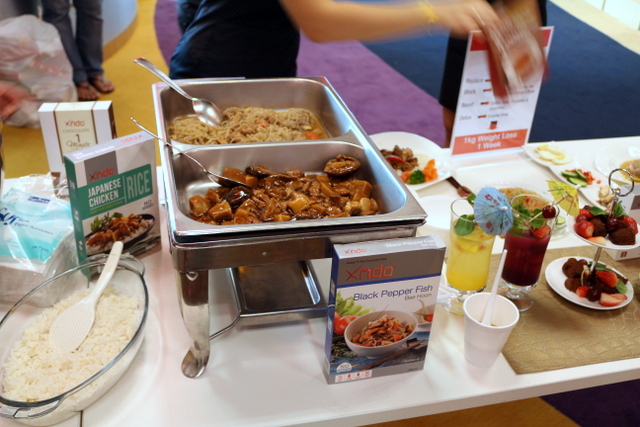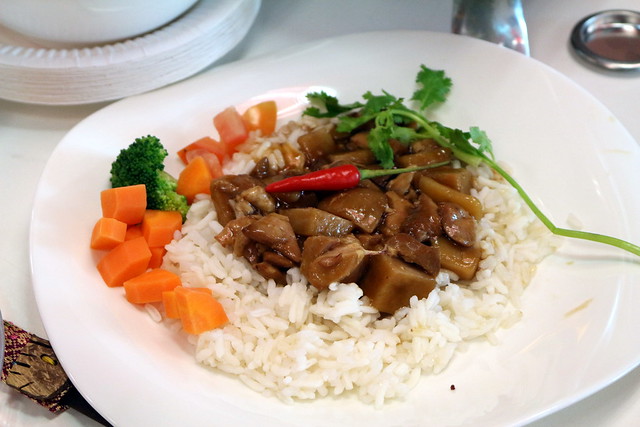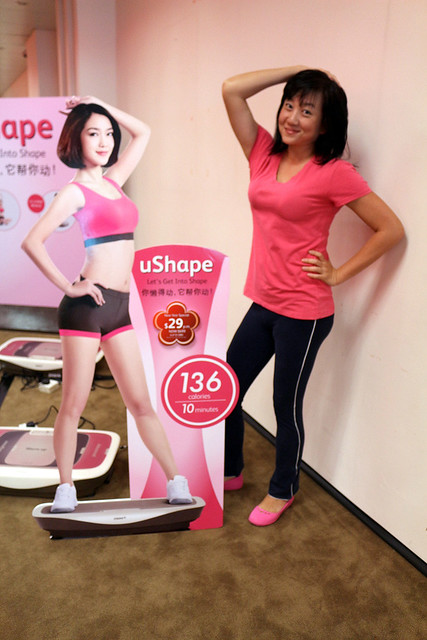Wow what a night.
The Asia's 50 Best Restaurants 2014 have been unveiled. We've now got Taiwan and Korea represented, although Malaysia looks sorely missing. Quite a few new entrants, and Singapore did well with eight restaurants in the list, including two in the Top 10 - Waku Ghin (no.7) and Restaurant Andre (no.6).
My full story on the awards is up on Yahoo and Makansutra (cover story right now)
http://sg.entertainment.yahoo.com/news/eight-singapore-restaurants-asia-50-best-restaurants-2014-041904308.html
http://www.makansutra.com/stories/3/1099/EightSingaporeRestaurantsMakeAsia%E2%80%99s50BestRestaurants2014
But here are some event photos, so you can take in some of the fun. This year the event at Capella Singapore is a bit more exclusive with very limited tickets available.

We started the day with a media roundtable with the Winner of Asia’s 50 Best Restaurants Lifetime Achievement Award 2014, hosted by award sponsor Diners Club International. This year it is Ivan Li of Family Li Imperial Cuisine. Here he is seated (centre) with his wife (right) and Diners Club president Eduardo Tobon (left).
The award lauds Ivan's efforts at preserving and promoting imperial court cuisine from the Qing dynasty. Ivan's great-grandfather oversaw the imperial kitchens under the formidable but food-loving Empress Dowager Cixi. He passed down handwritten recipes to the subsequent generations. But it wasn't until 1984 or so that the family opened their first restaurant in a humble hutong in Beijing, after one of Ivan's siblings won a national cooking competition.
Family Li Imperial Cuisine tries to retain original flavours of the ingredients used with simple seasoning (salt, sugar, soy, vinegar, etc) as was used in the courts. No modern additives or condiments like oyster sauce, tenderiser or MSG. It all boils down to cooking techniques.
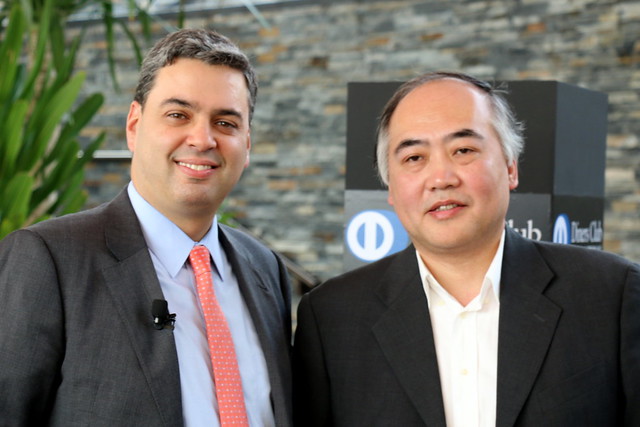
From that small one-table restaurant in Beijing, the cuisine won favour with many dignitaries and celebrities (Bill Clinton, Mohammad Ali, Mick Jagger). Ivan helped the family open more restaurants. Apart from the two restaurants in Beijing, Family Li Imperial Cuisine is now in Tianjin and Tokyo (two Michelin starred), and one in Melbourne.
They are planning to open in Taipei and Paris, But their main challenge is finding and training the right chefs. "It is not experience, but passion that matters. They must like cooking and have a feel for it," says Ivan.
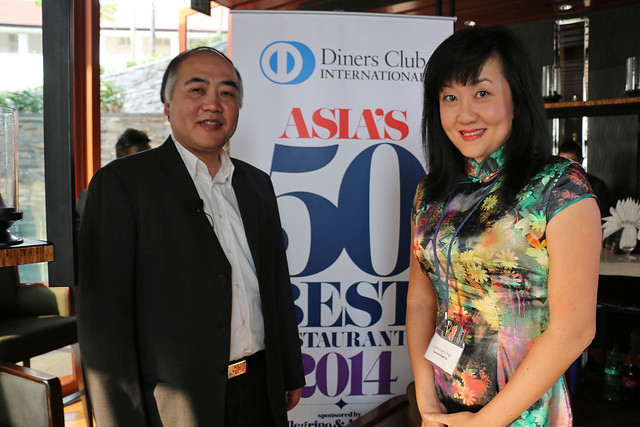
It was fascinating learning about what the imperial kitchens and etiquette were like in the Qing dynasty under Cixi. They served 130-150 dishes at every meal, under tight supervision and security. The Emperor had his own personal kitchen and dined alone (no, no romantic dinners with concubines).
Some of the ingredients used then are rare today, like elephant trunk, bear's paw and belly, tiger meat, and swan. Venison was popular, but we learned the Manchurians did not eat horse, dog or snake. Lobster was not part of court cuisine, but the Li family has managed to use the old cooking techniques to bring out the best in this crustacean.
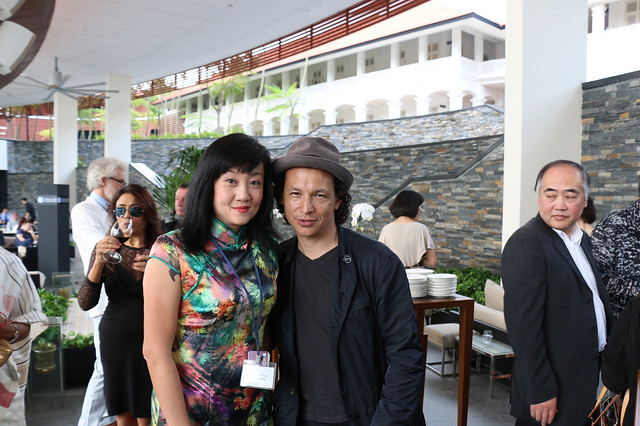
I was walking by when Bobby Chinn waved me over for a photo together. No, he doesn't know me. Probably thinks I'm a Chinese waitress. Oh, he's moved to London where he's opened the "House of Ho"... Hmm, that is so him. Oh well, he is quite the character.
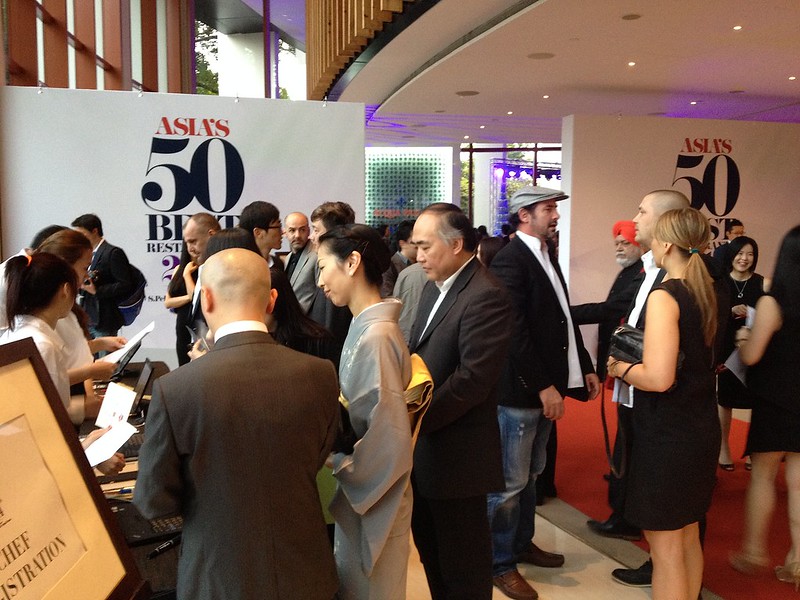
iPhone 4S photo
Meanwhile, over at the main event, it was a Who's Who of culinary greats. Everywhere you look, there's an accomplished chef or restauranteur.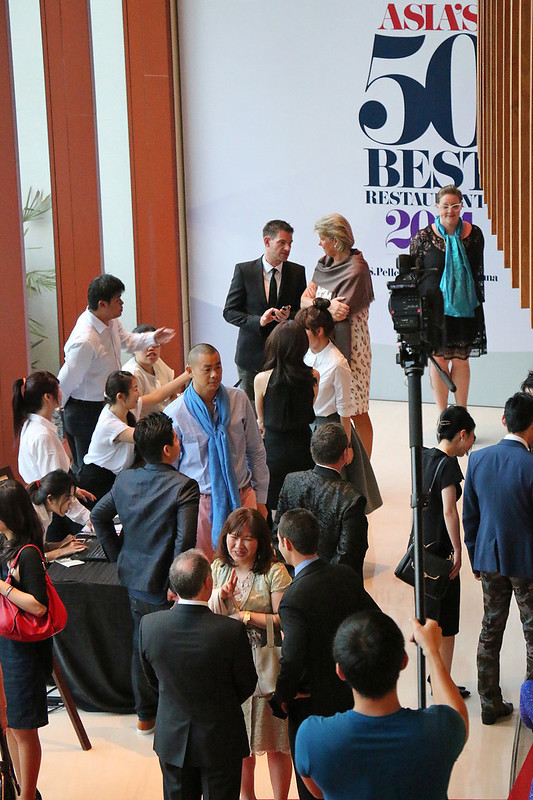
Chef Andre Chiang really stood out with his blue shirt and pink pants, when most people were dressed in black.
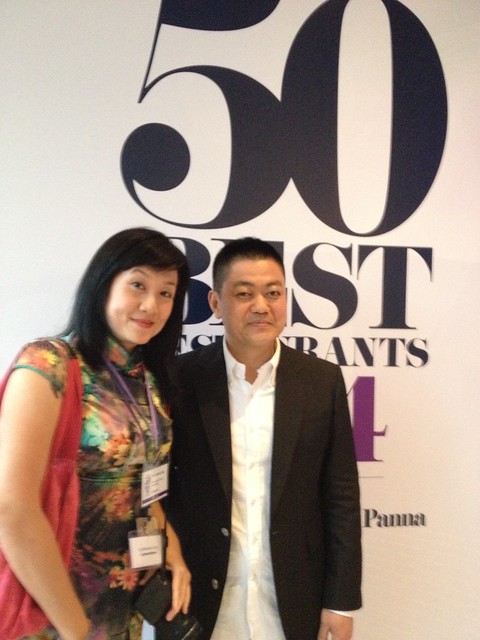
iPhone 4S photo
Narisawa-san kindly obliged for a photo (thanks to Jeffrey Merihue of Chowzter/Mofilm who knows him well). Narisawa was no.1 on the 2013 list.
Chef Julien Royer from JAAN giving a video soundbite. He was last year's "One to Watch".
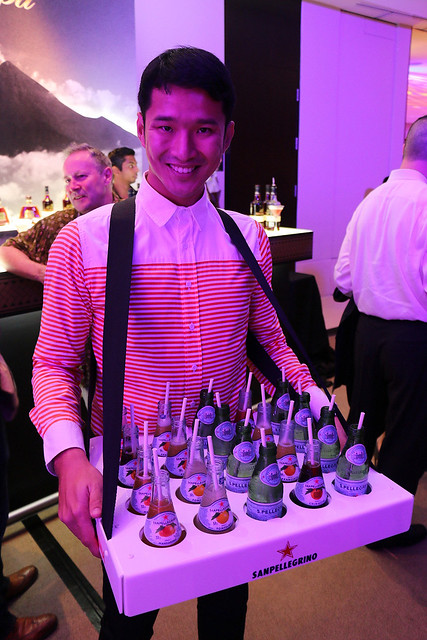
San Pellegrino is of course one of the key sponsors.
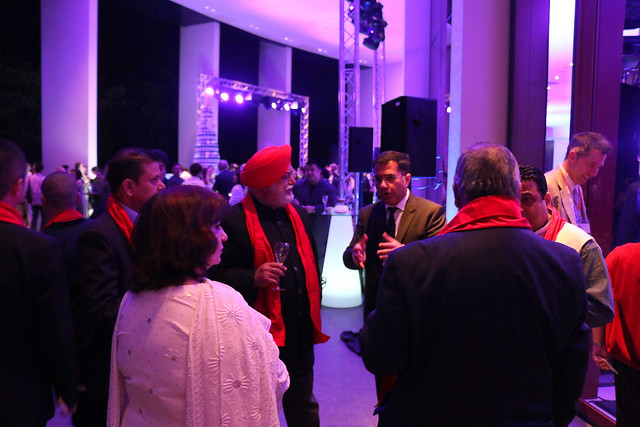
The contingent from India, with Manjit Gill from Bukhara (no.27) later to win the S.Pellegrino Best Restaurant in India. In total, India has six entries on the list.
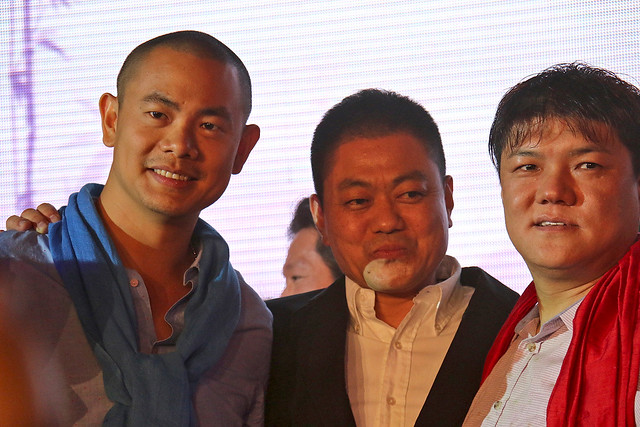
Chef Andre Chiang (left) won the respected Chefs’ Choice Award, voted for by his peers on Asia’s 50 Best Restaurants list. Restaurant Andre is also the San Pellegrino Best Restaurant in Singapore. Here he is with Yoshihiro Narisawa and Seiji Yamamoto.
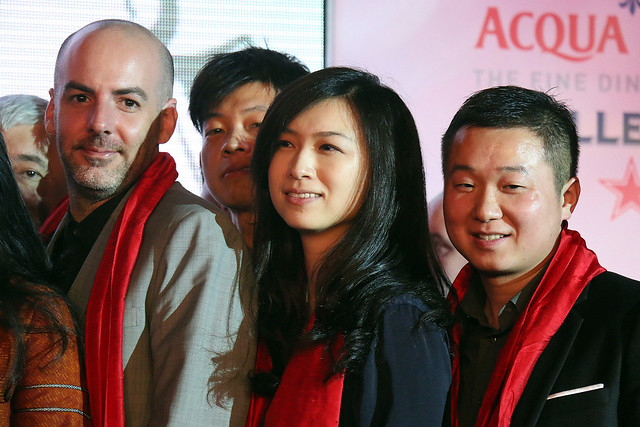
Taiwan's Lanshu Chen (lady in middle) is the Veuve Cliquot Best Female Chef. Her restaurant Le Moût in Taichung City entered the list this year at no.24.
Best Pastry Chef this year is also female - it's our very own Janice Wong of 2am:dessertbar, winning the title for the second year in a row.
But of course, everybody wants to know who is no.1!

We were met with some surprise when Narisawa was announced at no.2, also the Best Restaurant in Japan. Which meant no.1 was a restaurant not in Japan. It was David Thompson's Nahm in Bangkok.
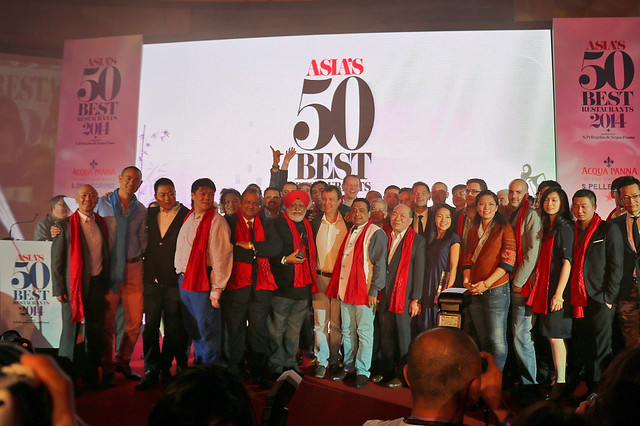
As usual, it ended with everyone up on stage. All 50 of Asia's best.
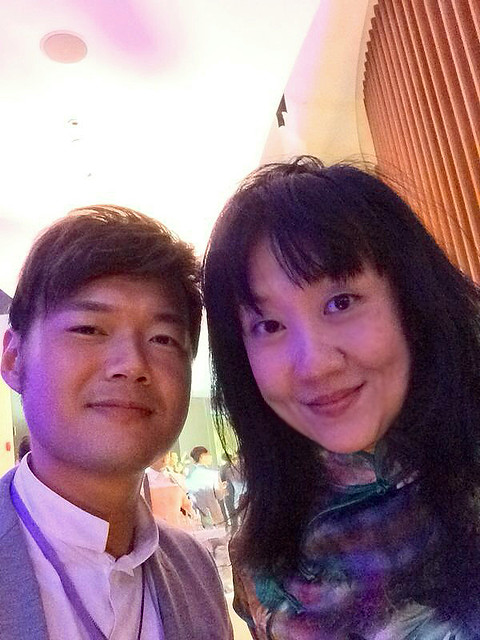
Photo from Daniel Ang
It was an awesome evening, with fellow foodies and fabulous friends. I was looking disheveled towards the end, but Daniel remained impeccably stylish (thanks for the nice photo, Daniel!).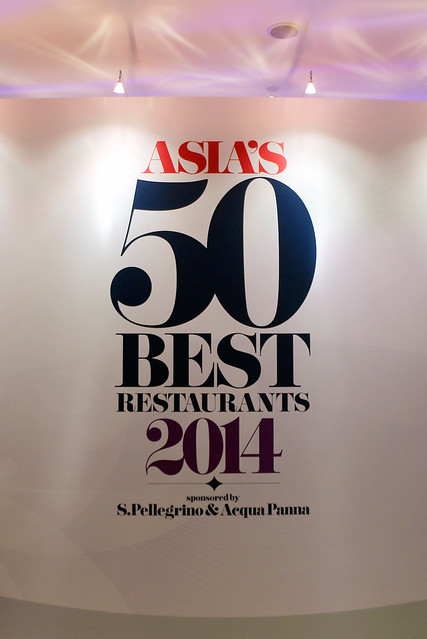
So here is the full list of award winners. I just had Waku Ghin and am going to Andre's tonight, so I will bring you reviews of both places in coming weeks.
Asia’s 50 Best Restaurants 2014
1. Nahm – Bangkok, Thailand2. Les Créations de Narisawa – Tokyo, Japan
3. Gaggan – Bangkok, Thailand
4. Amber – Hong Kong, China
5. Nihonryori Ryugin – Tokyo, Japan
6. Restaurant Andre – Singapore
7. Waku Ghin – Singapore
8. Ultraviolet – Shanghai, China
9. Lung King Heen 龍景軒 – Hong Kong, China
10. 8 1/2 Otto e Mezzo Bombana – Hong Kong, China
11. Mr & Mrs Bund – Shanghai, China
12. Iggy’s – Singapore
13. Caprice – Hong Kong, China
14. Les Amis – Singapore
15. Bo Innovation – Hong Kong, China
16. Kagurazaka Ishikawa – Tokyo, Japan
17. Jaan – Singapore
18. L’Atelier de Joel Robuchon – Hong Kong
19. Fook Lam Moon 福臨門 – Hong Kong, China
20. Jungsik – Seoul, Korea
21. Sra Bua by Kiin Kiin – Bangkok, Thailand
22. Quintessence – Tokyo, Japan
23. Tippling Club – Singapore
24. Le Mout – Taichung City, Taiwan
25. L’Effervescene, Tokyo, Japan
26. Fu 1015 – Shanghai, China
27. Bukhara – India
28. Bo.Lan – Bangkok, Thailand
29. Indian Accen, at The Manor – New Delhi, India
30. Dum Pukht – New Delhi, India
31. Issaya Siamese Club – Bangkok, Thailand
32. Varq – New Delhi, India
33. 28 Hubin Road – Hangzhou, China
34. Takazawa – Tokyo, Japan
35. Shinji by Kanesaka – Singapore
36. Wasabi by Morimoto – Mumbai, India
37. Eat Me – Bangkok, Thailand
38. Sukiyabashi Jiro – Tokyo, Japan
39. Robochon Au Dome – Macau, China
40. Imperial Treasure Super Peking Duck – Singapore
41. Sawada – Tokyo, Japan
42. Hajime – Osaka, Japan
43. Sushi Saito – Tokyo, Japan
44. Nihonbashi – Colombo, Sri Lanka
45. Yardbird – Hong Kong, China
46. Family Li Imperial Cuisine – Shanghai, China
47. Sarong – Bali, Indonesia
48. Franck Bistro – Shanghai, China
49. Karavalli – Bangalore, India
50. Tenku RyuGin – Hong Kong, China
FYI: How Asia’s 50 Best Restaurants list is compiled
Asia’s 50 Best Restaurants list is created from The Diners Club® World’s 50 Best Restaurants Academy, an influential group of over 900 international leaders in the restaurant industry, each selected for their expert opinion of the international restaurant scene. The Academy comprises 26 separate regions around the world. Each region has its own panel of 36 members including a chairperson to head it up. The panel is made up of food critics, chefs, restaurateurs and highly regarded ‘foodies’, each of whom has seven votes. Of the seven votes, at least three must be used to recognise restaurants outside of each voter’s region. At least ten panelists from each region change each year. None of the employees of any of the sponsors associated with the awards, including the main sponsor, votes or has any influence over the results.
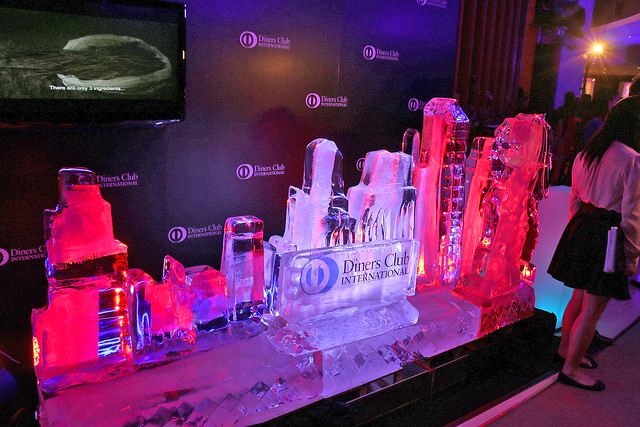
All photos (except where indicated) are taken with the Canon EOS 70D, kindly loaned by Canon Singapore. I am so glad I had this camera, cos my old 400D would not have done this well in the low light conditions!













